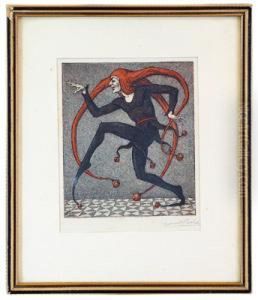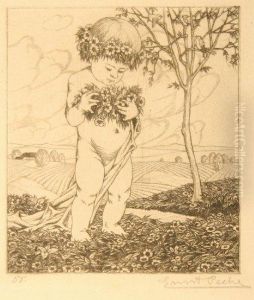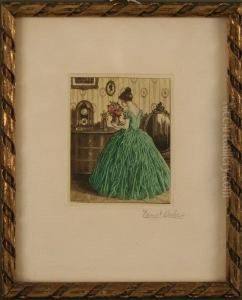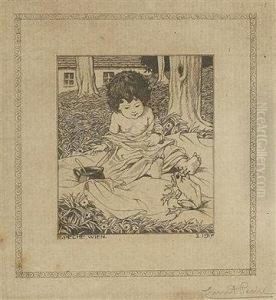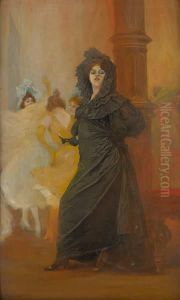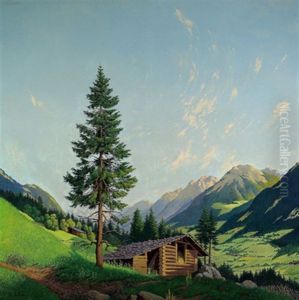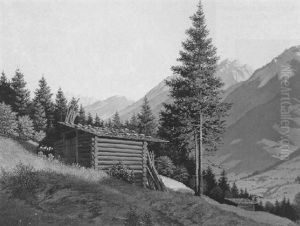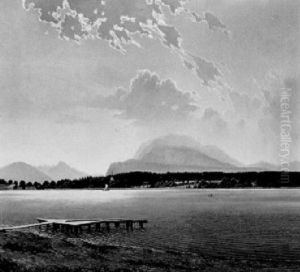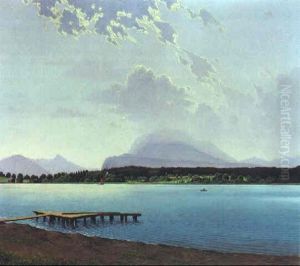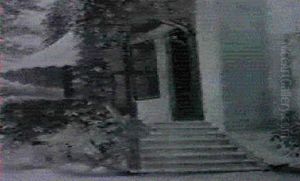Ernst Peche Paintings
Ernst Peche was an Austrian artist, designer, and architect, who was a significant figure in the Wiener Werkstätte, a production community of visual artists in Vienna that brought together architects, artists, and designers. Born on April 4, 1886, in Vienna, Austria, Peche developed an interest in art at a young age. He studied at the School of Applied Arts in Vienna, where he was influenced by the Secessionist movement and its leaders, such as Gustav Klimt and Josef Hoffmann.
After completing his studies, Peche initially worked as a painter and decorative artist. He was recognized for his graphic work, which included delicate and stylized illustrations, and for his designs for lace, textiles, ceramics, and glassware. His style was characterized by elegant lines, a flair for ornamentation, and a tendency to include fantastical, fairy-tale elements. Peche's aesthetic sensibility was well suited to the Wiener Werkstätte's philosophy, which emphasized the total work of art (Gesamtkunstwerk) and aimed to infuse beauty and artistry into everyday objects.
In 1915, Peche was invited to join the Wiener Werkstätte, and he quickly became one of its leading figures. His work during this period included a wide range of objects, from jewelry and fashion accessories to furniture and interior designs. Peche's versatility and creativity helped to expand the Werkstätte's repertoire and contributed to its international reputation.
Peche was also a significant influence on the development of the Art Deco movement, which became prominent in the 1920s. His designs from the pre-war period presaged the geometric simplicity and stylization that would become hallmarks of Art Deco. Despite his earlier successes, Peche's later career was marked by financial difficulties and a decline in the popularity of the Wiener Werkstätte's aesthetic. He continued to work on various projects, including book illustrations and glass designs, until his death in Vienna on June 16, 1956.
Ernst Peche's legacy is reflected in his contributions to the modernist movement and his role in bridging the gap between the ornamental tendencies of the Secession and the functionalist approach of later design movements. His works are held in many museum collections and continue to be celebrated for their elegance and inventiveness.
